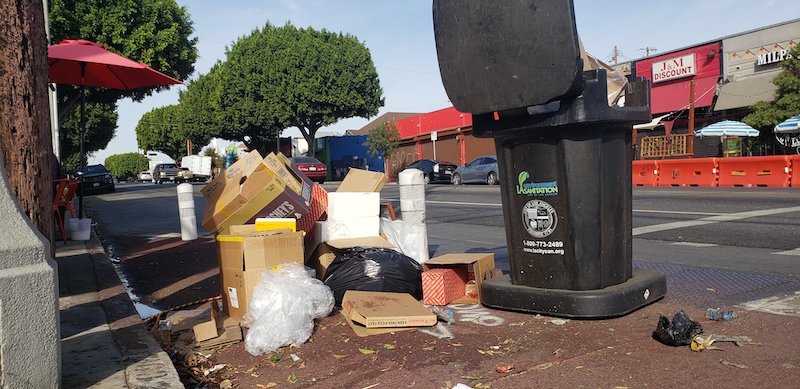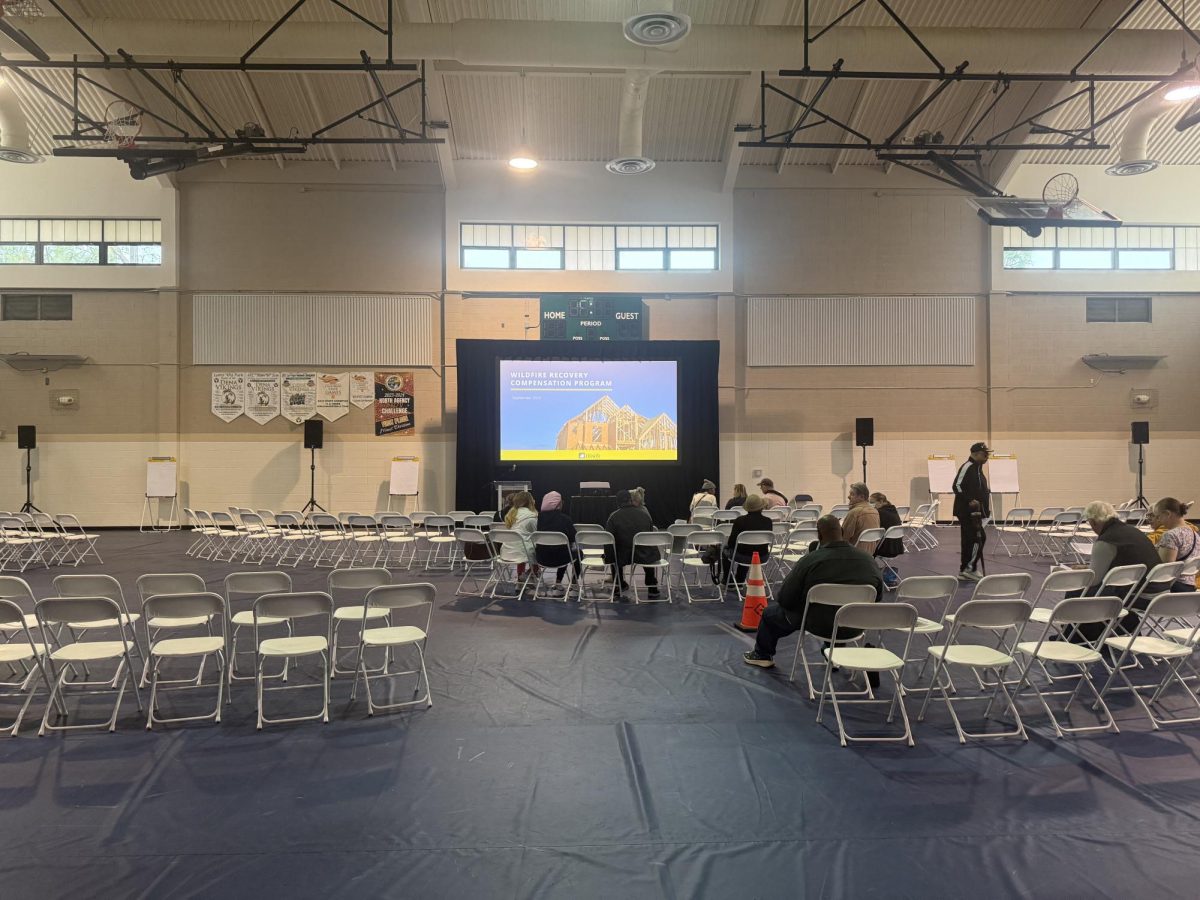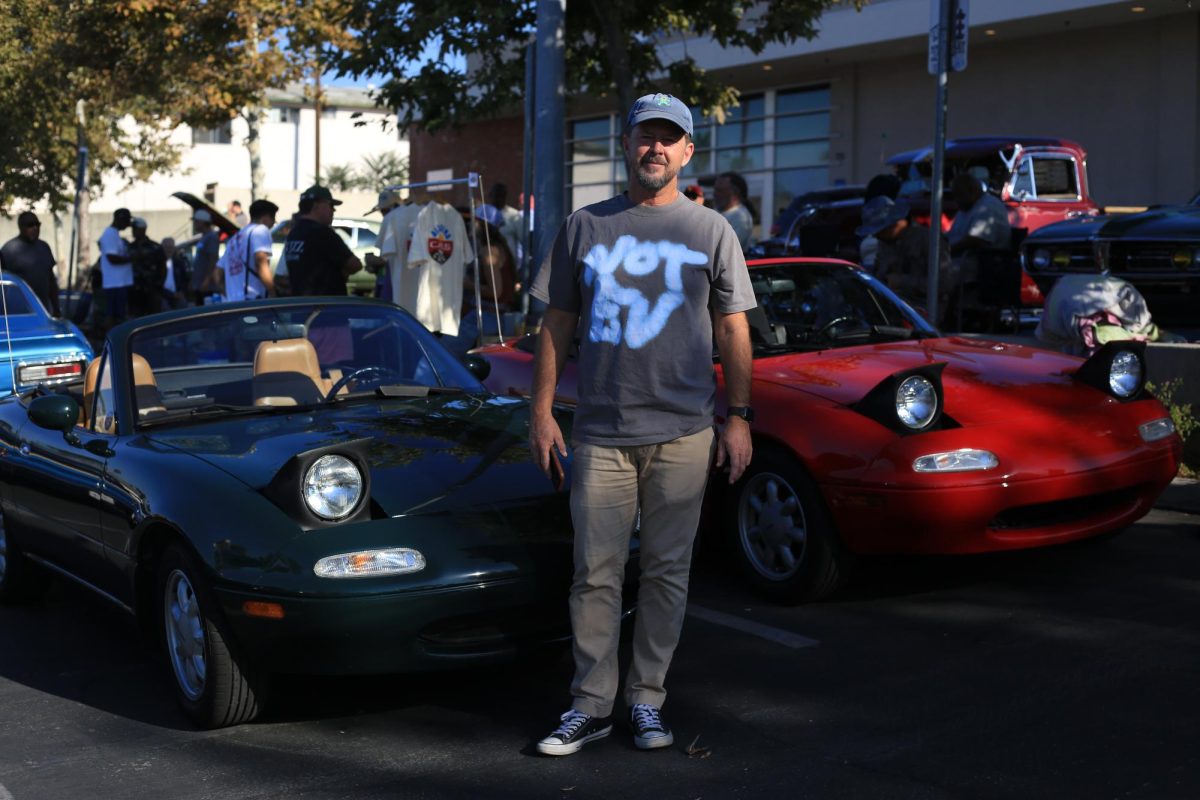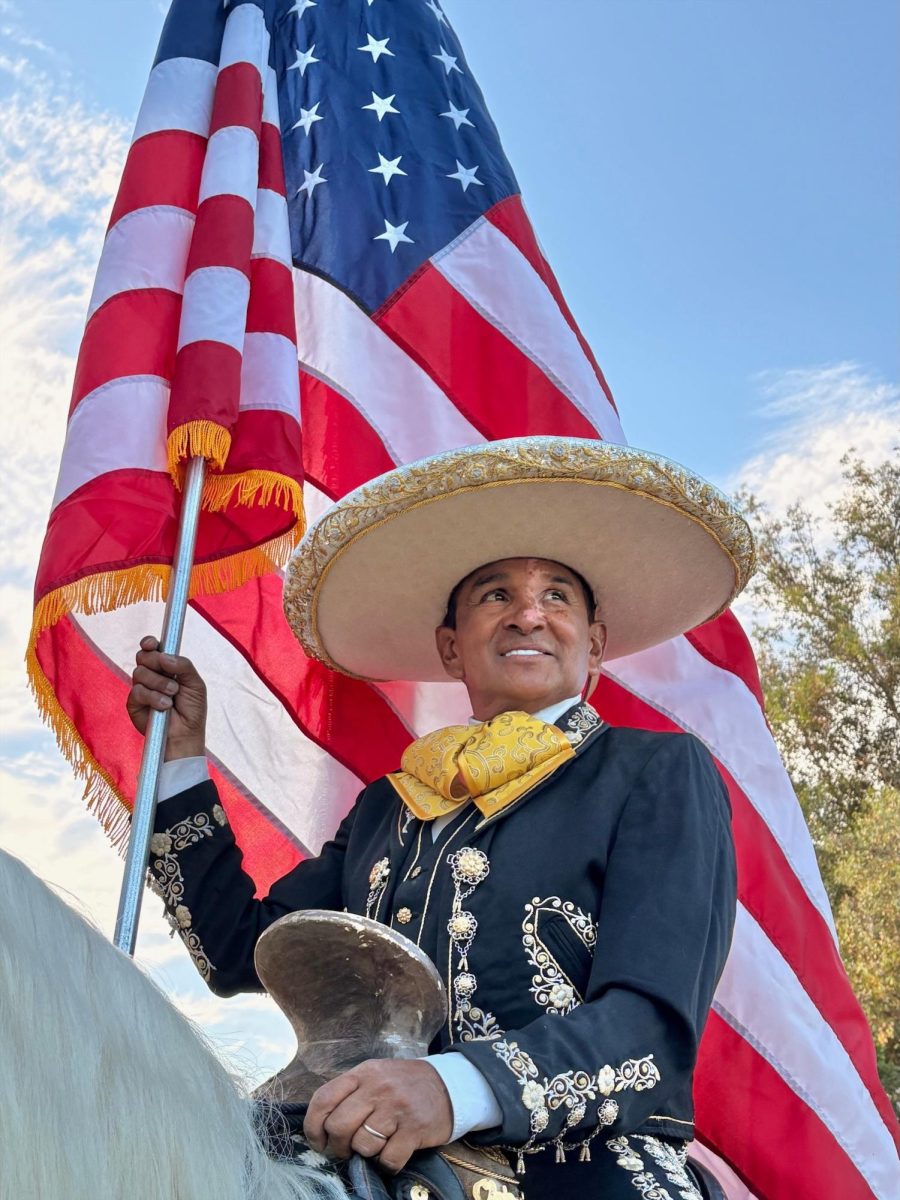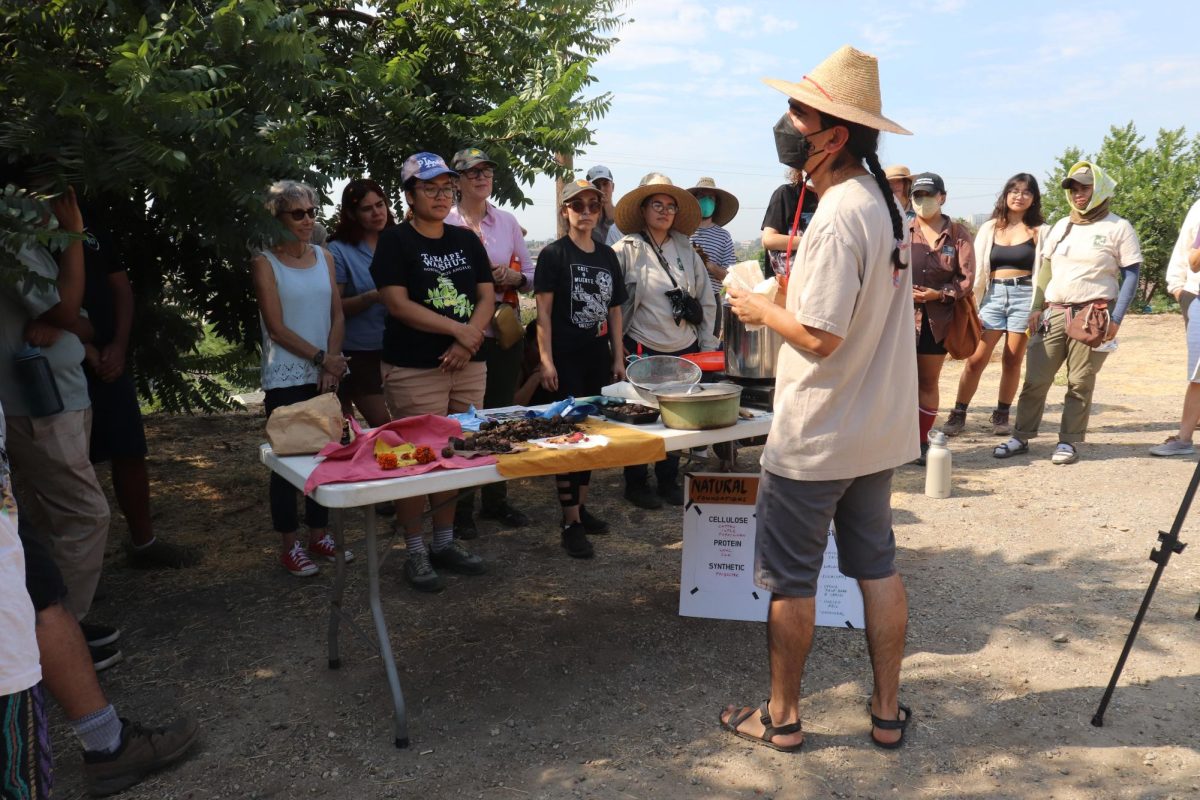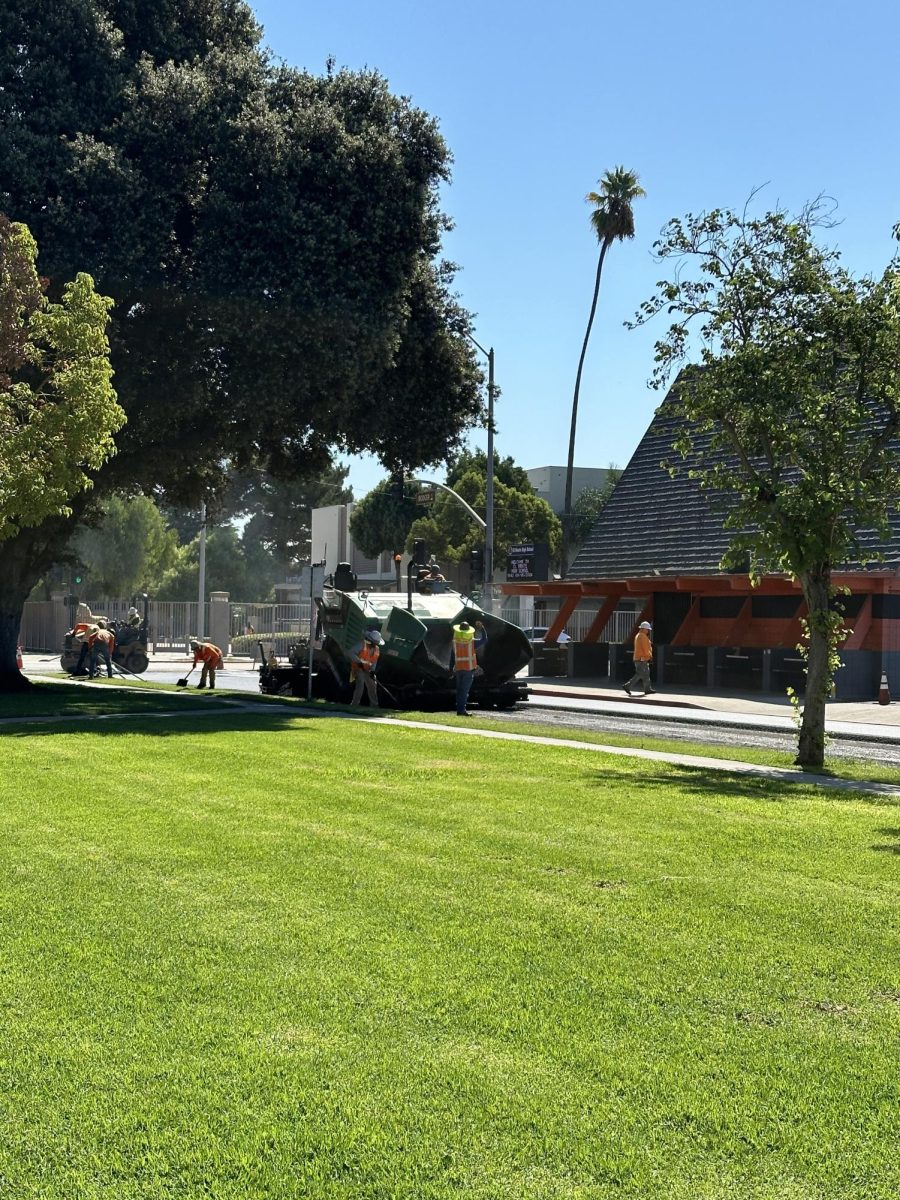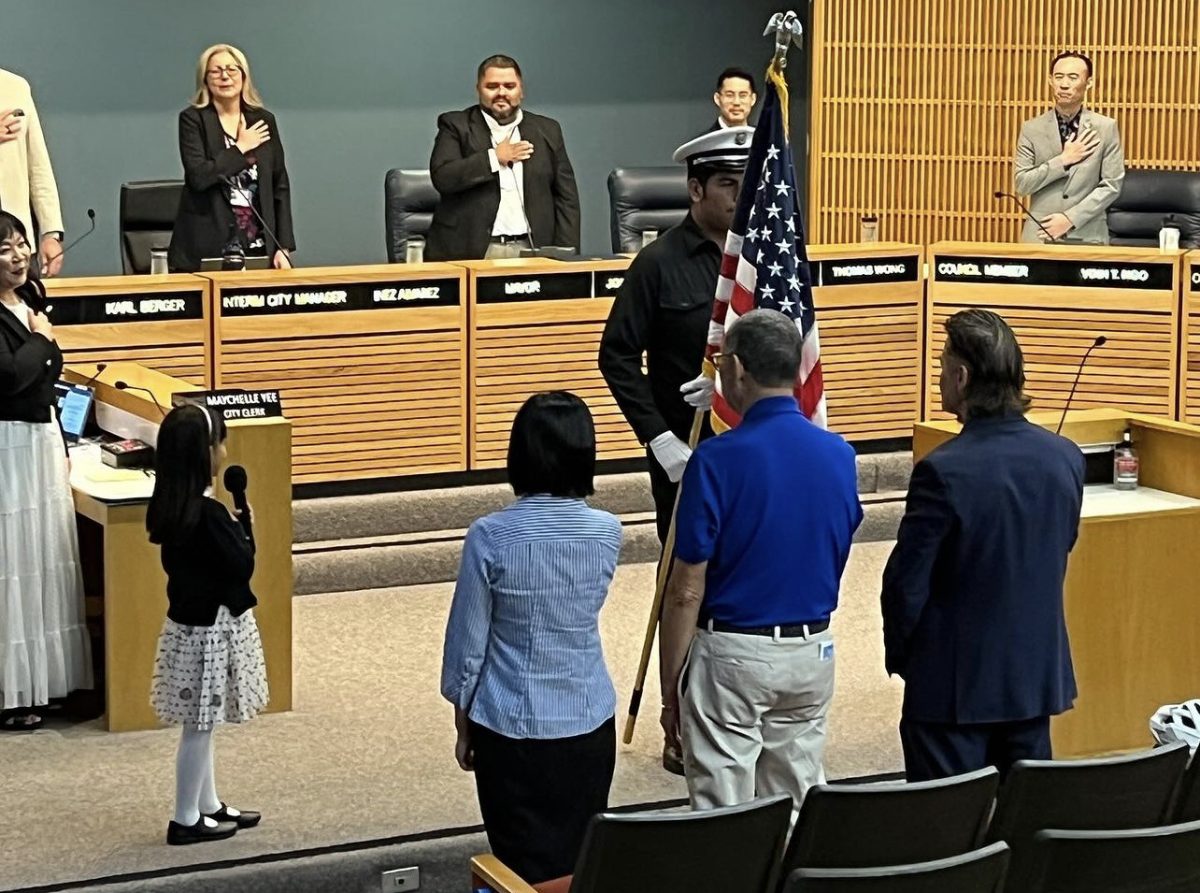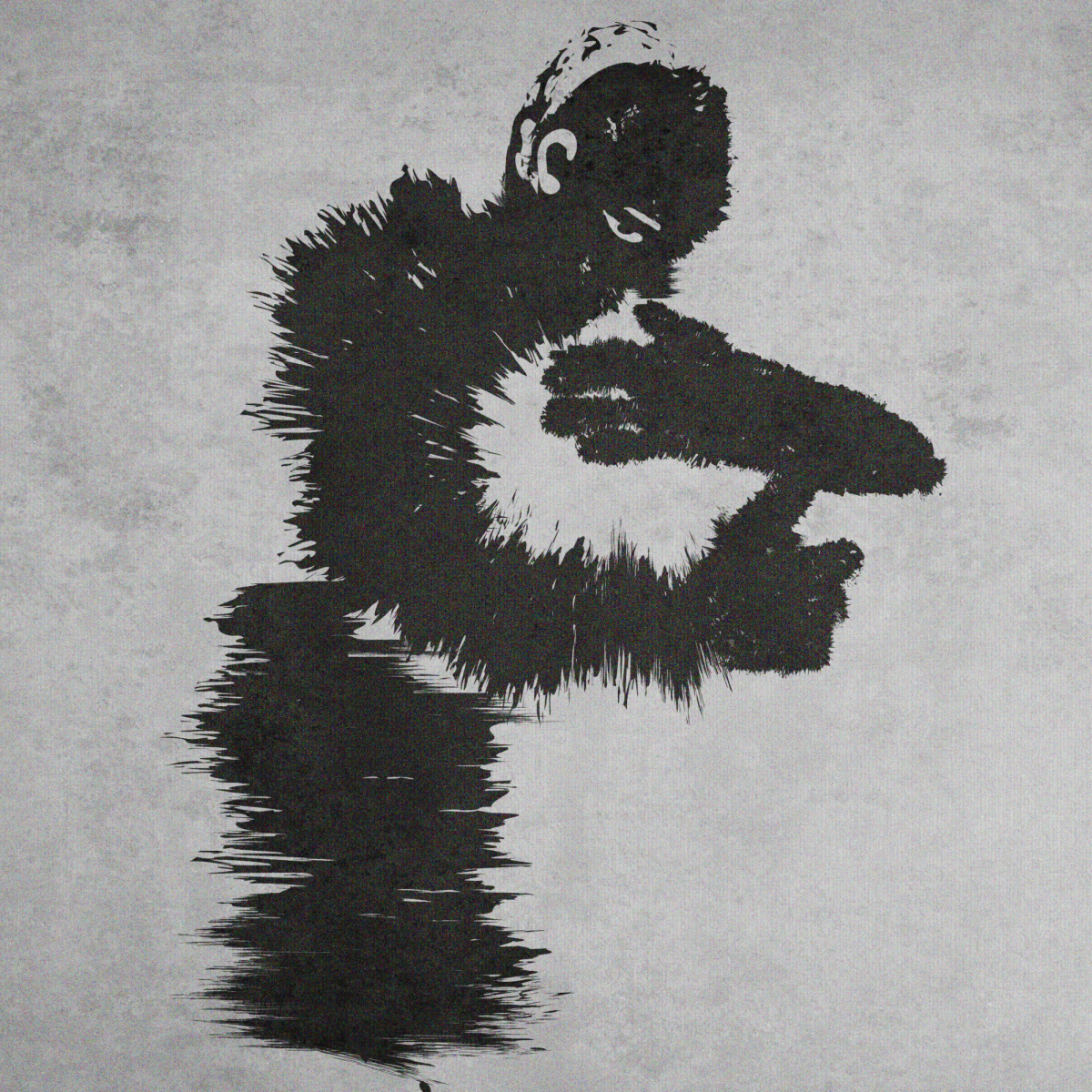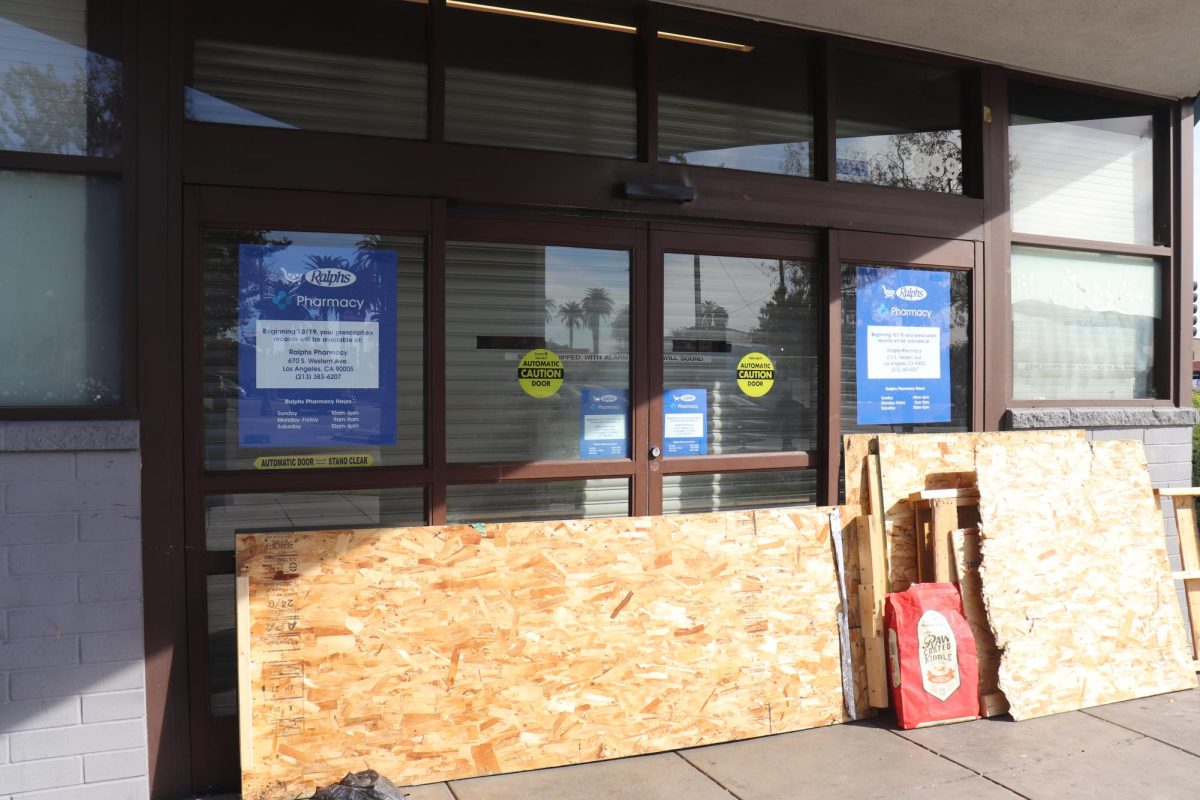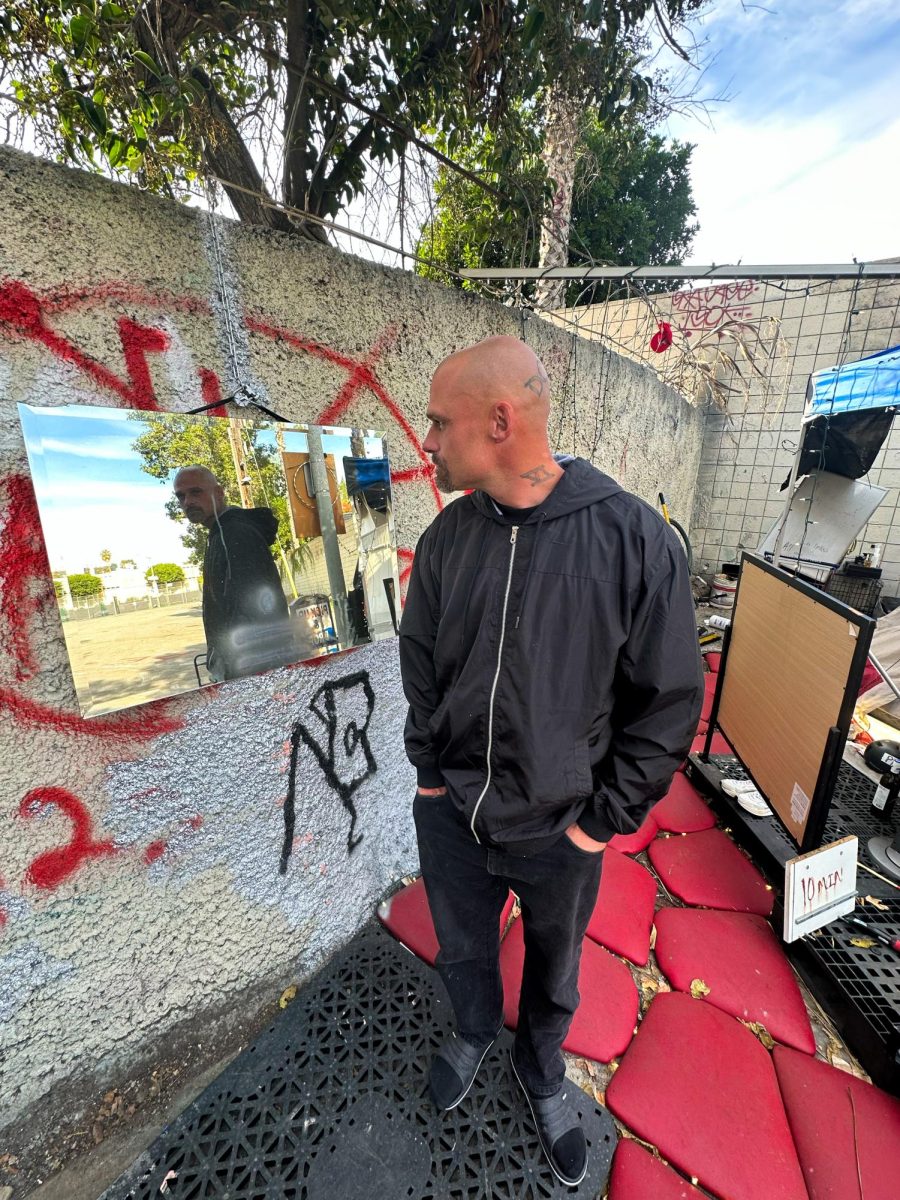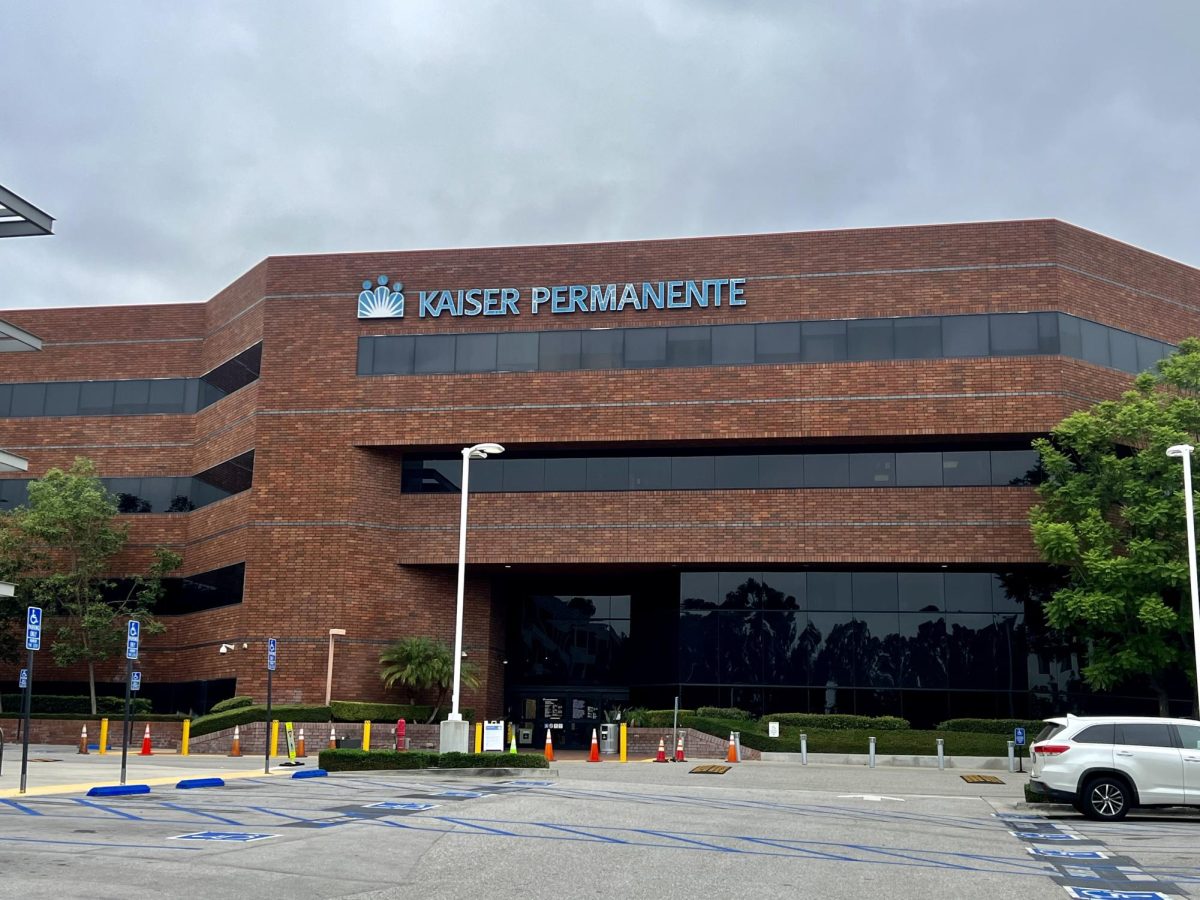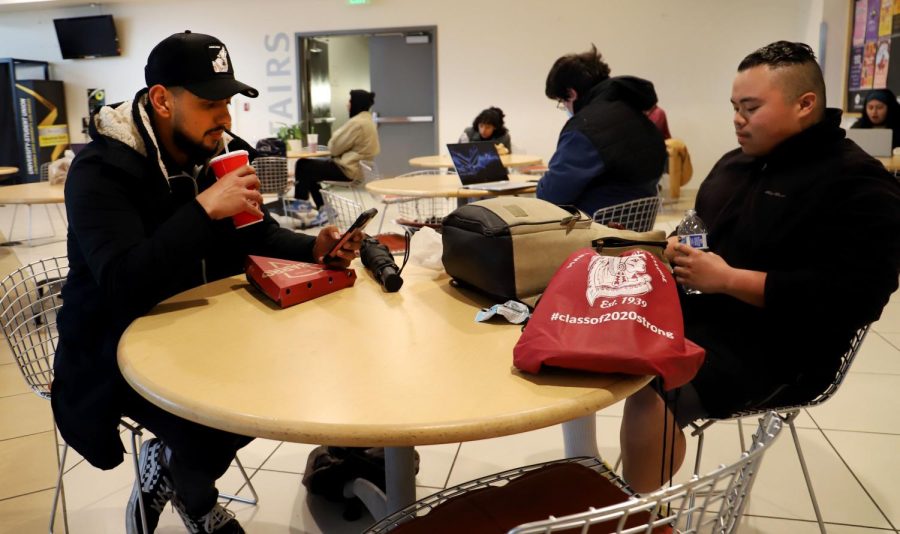Boyle Heights’ main commercial strip has about half the number of public trash bins and one-third the number of bike racks compared to a similar stretch of Los Feliz, according to an informal survey conducted late last month.
At the same time, the area surveyed in Los Feliz has nearly twice the amount of sidewalk cracks and other damage.
The field survey was conducted after UT Community News received complaints about overfilled trash cans and other infrastructure issues in Boyle Heights. The information was collected on Nov. 20 from 10 a.m.-11 a.m. on a half-mile stretch of the main commercial street in the neighborhood — Cesar Chavez Avenue from Soto Street to North Evergreen Avenue — and in a neighborhood with a similar population density, Los Feliz, according to the L.A. Times’ “Mapping L.A.” project. A strip of Hillhurst Avenue, from Prospect Avenue to Ambrose Avenue, was surveyed in Los Feliz.
Information collected and visualized by Jathniel Coronado on November 20.
Does neighborhood income matter?
Some Boyle Heights residents who chimed in on social media said their own community is to blame for overfilled trash bins. For instance, one resident said shops nearby sometimes use the trash bins.
Still other residents wonder if their neighborhood is simply under-resourced because of the community’s income level or other demographic factors.
“A lot of the trash cans are full and people start piling the trash near it. So, in a way, the people are trying to keep it clean but there’s nowhere to throw the trash if they’re not emptying the cans,” said Boyle Heights resident Nancy Escobedo.
In recent years, Boyle Heights had a yearly median household income of about $36,000 per household and is 95% Latinx and 2 percent white, according to Statistical Atlas, which compiles Census data. Meanwhile, the median income was roughly $80,000 in Los Feliz, and it was 67% white and 14% Latinx.
A comparison of public resources on all commercial streets in lower- and higher-income neighborhoods in Los Angeles would be required to know for certain whether there are disparities in the city but that is something that has been found generally in urban areas, experts say.
“Poorer neighborhoods have been associated with lower levels of service and infrastructure in some studies,” Victoria Basolo, an urban planning and public policy professor at University of California Irvine, wrote in an email. “When comparing neighborhoods, various aspects have to be taken into account before making assumptions about the differences in communities.”

Those aspects include whether businesses in the area pay more for bins or for more pickups and whether one neighborhood has more dine-in options while the other is more take-out oriented.
Some of the bins in Los Feliz are effectively provided by businesses: Those local businesses pay an additional tax in the area through its Business Improvement District [BID] to fund projects there including additional trash bins, according to Elena Stern, the spokeswoman for the city’s Department of Public Works.
There is no BID in the Boyle Heights area, which critics say could be an example of less engagement or resources in the neighborhood — perhaps due to its income level.
Boyle Heights has a total of 195 plastic LASAN public street receptacles — or almost 25 per 10,000 people — while Los Feliz has about eight per 10,000 people, according to an analysis of data from a city report and population data for both neighborhoods. That number jumps to about 22 per 10,000 when factoring in the BID tra
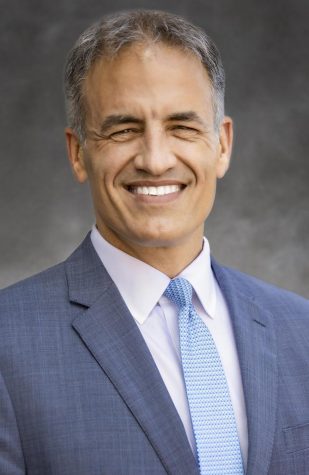
sh cans, according to the report. Boyle Heights does not have BID-supplied bins.
Tools to report complaints and track cleanliness
Greg Good, president of the city’s Board of Public Works, said the sanitation bureau has a number of measures to assess and fill needs, including working with the city council offices and BIDs.
“LA Sanitation and Environment gathers and utilizes comprehensive data through CleanStat quarterly indexing, a street-by-street assessment of the cleanliness of city streets, one of which is currently underway,” Good said. “Through CleanStat, the Bureau is able to best determine areas of need for deployment of resources based on data, and in a fair and equitable way.”
CleanStat, which is part of Mayor Eric Garcetti’s “Clean Streets” initiative, is a program in which the city’s sanitation department drives, every quarter, through all its public streets and alleys and gives each block a “cleanliness score” from one to three, highest to lowest. The stretches of Cesar Chavez and Hillhurst that were examined both received the highest ranking.
The Los Angeles Sanitation and Environment Bureau’s annual report in 2019 noted concerns from residents about overflowing garbage cans and addressed such concerns with a feature on the MyLA311 mobile app that allows residents to notify the bureau of these incidents.
Data obtained from the city, LASAN’s 2019 receptacle pick up route and schedule, seems to show that trash is collected near the area surveyed in Los Feliz twice per week and at least double that near the Boyle Heights strip examined.
Getting involved can make a difference
Experts say some of the differences could be a result of one community having more influence over another and one good antidote is increased political engagement.
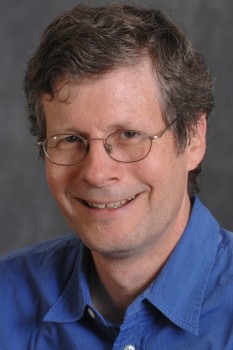
“It is well known that across many cities including the country’s largest cities, communities with lower incomes, especially communities of color, on average have more inadequate infrastructure and less services.” said UCLA Urban Planning Department Chair, Chris Tilly in an email. “It boils down to a community’s political power and influence. Wealthier and whiter communities tend to give more campaign contributions, vote at higher rates, have the free time and know-how [knowledge] to show up at hearings or otherwise raise a fuss, and have social networks connecting them to other influential people. That said, more disadvantaged communities can increase their political power by mobilizing and organizing, and there’s a long history of communities in cities like Los Angeles doing that as well.”
That is exactly what is happening in Boyle Heights.
A Facebook group called “First Blocks of Whittier Blvd” is working to empower residents to clean their own blocks and to push the city to do its part. The group has written letters in support for ground crew street sweeping, more trash cans and daily trash pick up from Boyle Heights.
“I made flyers [and] knocked door-to-door or put up flyers around the neighborhood about what we were going to do,” said Veta Gashgai, who co-founded the group, said in a Facebook messenger interview. “I bought $100 worth of scoopers and told people to bring your own broom (BYOB). Over time, we got donations of brooms, water, snacks, gloves and hand sanitizer; the community really came through.”
Residents who see a receptacle that needs service are encouraged to report it on the MyLA311 app, or to LASAN at its round-the-clock customer care center phone number: 800-773-2489.

